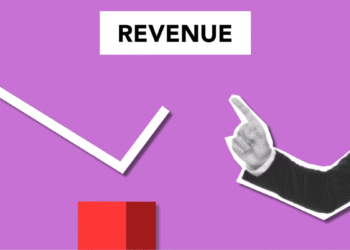I used to suck at tracking upsells and cross-sells. I mean, I knew they were important.
Every podcast, marketing blog, and Shopify tutorial screamed, “Add an upsell! Create a bundle! Don’t leave money on the table!” So I did. I added one-click offers, post-purchase cross-sells, even exit popups with bundle discounts.
But here’s the thing no one told me: if you’re not tracking what’s working, it’s just noise.
I was running offers that felt smart but weren’t actually making money. I had no clue which ones were driving conversions or just annoying customers. And my average order value (AOV) stayed flat for months.
Eventually, I got my act together. I started tracking, testing, and tweaking. And that’s when everything shifted.
So, if you’re feeling lost on how to measure upsell and cross-sell performance, let me walk you through what I’ve learned — mistakes, wins, and the metrics that actually matter.
Why You Can’t Just “Set It and Forget It”?
I get it. You’re busy. You finally set up those post-checkout offers, and you’re hoping they’ll quietly boost your revenue behind the scenes.
But trust me — this stuff needs monitoring. Otherwise, you’re flying blind. You won’t know:
-
Which upsells are converting
-
Which cross-sells are being ignored
-
If your offers are helping or hurting your conversion rate
-
Whether you’re accidentally annoying customers with bad timing
I learned the hard way. One of my cross-sells (an add-on digital workbook) had a zero conversion rate for three weeks straight. Why? Because it was priced higher than the main product. Total rookie move.
For smarter planning, I leaned on insights from posts like how to increase order value with upsells and common upselling mistakes and how to avoid them.
Start with These Key Metrics
You don’t need fancy tools (at least not at first). Here are the metrics I track every single week:
-
Upsell Conversion Rate: Out of the people who see your upsell offer, how many say yes?
-
Cross-Sell Conversion Rate: Same idea, but for those related add-ons you pitch during or after checkout.
-
Average Order Value (AOV): Has it gone up since you added these offers?
-
Attach Rate: The percentage of total orders that included an upsell or cross-sell.
-
Revenue from Upsells/Cross-Sells: Track it as a separate stream. Don’t just lump it in with general sales.
If your AOV isn’t budging and no one’s biting, it’s time to dig deeper — and maybe revisit your strategy by reading about one-click upsells and how to implement them.
5 Tools That Make Tracking Easier
Here’s what I use (or have used) to keep tabs without spreadsheets taking over my life:
-
Shopify Analytics: If you’re using apps like Zipify or ReConvert, they break down conversions beautifully.
-
Payhip: I like how easy it is to track bundle performance and check how many people are buying the upsell offers I attach to digital products. Want to build smarter bundles? Start with how to create product bundles.
-
Google Analytics: For funnel visualization and checking what offers people are seeing vs. buying.
-
Post-purchase email reports: If you offer cross-sells via email, platforms like ConvertKit or MailerLite let you track clicks and purchases.
-
Manual tagging: Sometimes I add a “Bundle” or “Upsell” tag to the product name just so I can filter orders and spot patterns.
Things I Learned the Hard Way
Alright, here’s the part no one wants to admit — I made a lot of dumb mistakes in the beginning. Like:
-
Offering an upsell before someone had even bought the main product. Confused the heck out of them.
-
Using vague copy like “Want to add this to your order?” without saying what it is or why it’s useful.
-
Tracking only revenue, not conversion rate — which meant I couldn’t see when something was underperforming because of low traffic vs. bad messaging.
Looking back, understanding the psychology behind successful upselling would’ve saved me a lot of headaches.
My advice? Always test one thing at a time. Change the offer headline. Adjust the price. Shift the timing. But don’t change everything at once or you won’t know what worked.
How I Review Performance Weekly?
Here’s my quick-and-dirty weekly review checklist:
-
Check AOV in your store dashboard. Compare it to last week.
-
Open your upsell/cross-sell app or Google Analytics and pull conversion data.
-
Look at attach rate — how many people added extras?
-
Identify your top-performing offer. What made it work? Repeat it.
-
Kill or rewrite offers with zero traction. Don’t waste screen space.
It takes me maybe 20 minutes every Monday. That 20 minutes regularly adds 10–20% more revenue to my bottom line. Not a bad return, right?
Final Thoughts
Tracking upsell and cross-sell performance isn’t glamorous, but it’s where the profit lives.
Once you stop guessing and start tracking, you’ll be shocked at what actually moves the needle. Some of my best performers were things I almost didn’t offer — like a tiny $5 add-on that converts like crazy.
So don’t just set your offers and hope. Track them. Test them. Treat them like mini-products with their own goals.
Still wondering how to automate this? Check out how to create automated upsell funnels on Payhip it’s a great next step for streamlining your results.
And if you’re not sure where to start? Just open your store dashboard, look at your average order value, and ask: Is this as high as it could be?
Chances are, it’s not. Yet.








